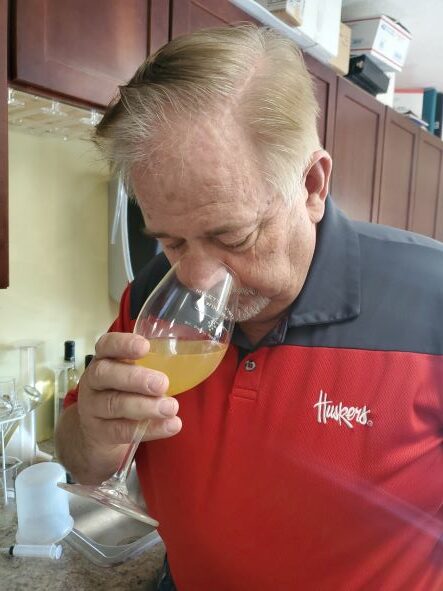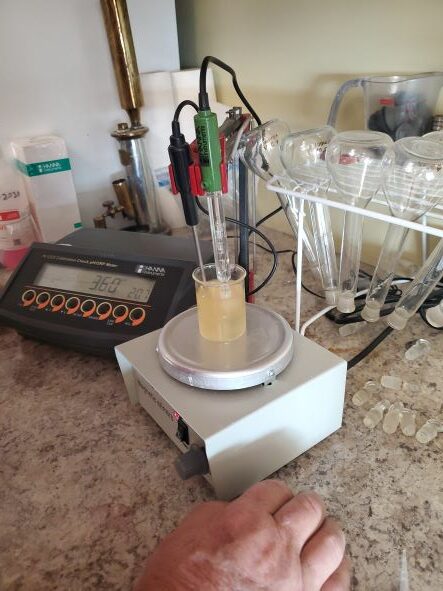The dry summer of 2022 was not a complete unknown to any long-term Great Plains residents, but 2022 was definitely a dry and windy one.
In fact, I remember one of my Real Estate clients years ago asked, “so what’s going on in Nebraska?” Too which I replied, “it’s hot and dry.” Jim chuckled and said, “so tell me something that’s changed in Nebraska during July & August.”
I have never forgotten Jim’s observation about Central Nebraska summers. However, the summer of 2022 was several degrees beyond the typical Nebraska summer.
We all know hot dry summers make sweeter Saint Libory watermelons, with richer flavors, the same is true for our grapes. Plants have to have enough H2O to keep all the foliage, roots and shoots alive, but dry weather concentrates sugars, without the delusion and translocation caused by excessive water.
The 2022 harvest is of course over, the juice is now raw wine, cloudy, unfiltered, but full of what is going to set it apart from a standard year. Currently I spend my time evaluating our raw wines chemistry and flavors and deciding what I can do to unveil good and even great wine.

My current focus is on settling the solids and filtering vintage 2022. Fining, racking, testing, fixing, filtering, bottling, and aging. In some instances, early bottling of wines replenished our warehouse. Those are some of the tasks that are going on behind tasting room walls.
With 15-vintages as winemaker, I have a greater confidence in identifying fixable issues to improve our wine stability and extending shelf life. Not that I have arrived, but there is a comfortable confidence that comes through experience.
Two weeks ago, we bottled the 2022 Edelweiss and Flight (which is a very-sweet edelweiss). Both wines I believe are richer in flavor due to a smaller crop load (by design), and our environmental conditions.
We also bottled some of the 2021Workhorse this week. Workhorse is a rich, flavorful, complexed sweet red wine that has been a crowd favorite since Miletta Vista opened 15-years ago.
Another aspect of winemaking that requires thought, precision, and consistency, is becoming comfortable with the lab work. As winemaker, you must get comfortable with performing lab procedures and what can be painstaking. This is required to create a great cold climate wine.

The 6,000 years of wine making history began in Turkey. Winemaking became famous in France and Europe, and the majority of the industry is centered around the metric system. Thus, conversion between empirical measurements and metric measurements is a must and this conversion becomes second nature in the business.
At the very least you need to know what conversions are required and be able to find a website or app that will help you with the conversions. Wine Business Monthly is one of those sites for me, they have lots of helpful online conversions you can plug and play.
Individual awards and recognition are good, but as a small industry in a sparsely populated state, perfection at all 21 wineries is a must. Each winery has to make great wines from the cold climate hybrid grapes that survive our climate and are used in our wines. Nebraska Made Wines must raise the brow – excit the palette and demand a “That’s Good”.
I will do my part with this 2022 vintage if you do your part by enjoying my work with FFA’s (friends, family & acquaintances), Loretta and I will do what we can to as Tom Bodett say, “keep the lights on.”